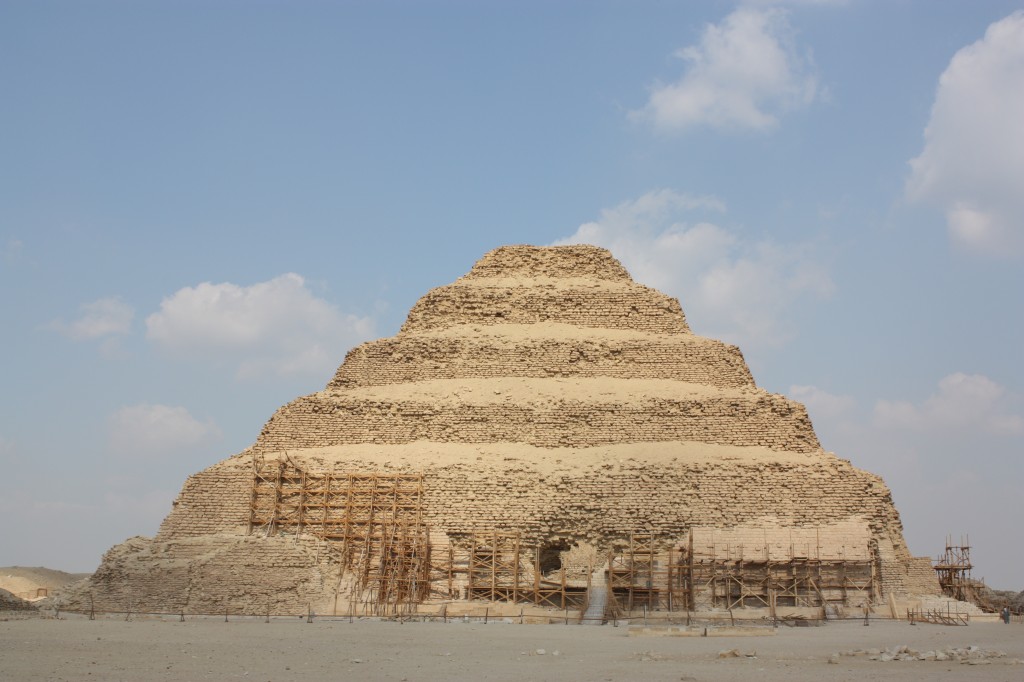The 4700-year-old Pyramid of Djoser, the step pyramid in Saqqara, Egypt, is not just the first pyramid in Egypt but is also the first monumental cut stone structure that we know of, has been on the verge of collapse since an earthquake in 1992. It was in such precarious condition that no attempts were made to stabilize it over the past 19 years out of fear that any movement at all could bring the whole thing down. Now a Welsh structural engineering company, Cintec, has installed large inflatable airbags to prop up the stone roof and they’re working.
Cintec has worked on important historical buildings before. They restored Windsor Castle after the devastating 1993 fire, and have worked on Buckingham Palace, the White House, and more pertinently, the Red Pyramid near Giza as well. Peter James, the former Royal Navy lieutenant-commander who founded Cintec 25 years ago, created the airbag technology to safely detonate improvised explosive devices in Afghanistan. The bags were filled with water and set up around an explosive to cushion the blast. When used as structural engineering tools, the airbags are filled with compressed air instead.
Mr James said: “[The pyramid] was very unstable when we got in there.
“The earthquake in 1992 had shifted everything sideways and it was a massive task trying to hold everything up without dislodging anything further.
“Until we got the scaffolding in place, we had no idea what was holding up the remaining stone.”
“It was a lethal and massive game of Ker-Plunk – trying to hold everything up, without dislodging anything further.”
They had planned at first to use the water-filled airbags, but as soon as they got a look at the inside of the pyramid, they knew that wasn’t going to work. The rocks in the ceiling that the airbags would be propping up weren’t smooth-sided; they were jagged and pointing every which way. They would in all likelihood have pierced the bags and doused the interior with water, an incalculable danger to a structure that has been baking in the desert for nearly 4700 years. Compressed air was the solution.
Now that the roof won’t come crashing down on them, the team can get to work repairing the pyramid. They plan to install thermo-dynamic steel rods diagonally through the pyramid’s steps so that all six step floors will be knitted together. They need to do it without marring the external view of the pyramid, however, which is going to be a challenge. For repair work to the outside, Cintec will only use materials that would have been available to ancient Egyptians.
